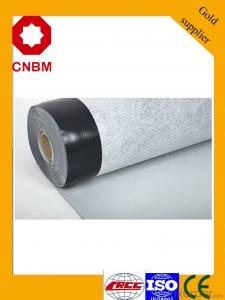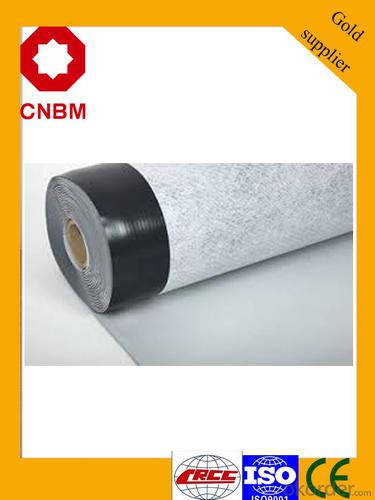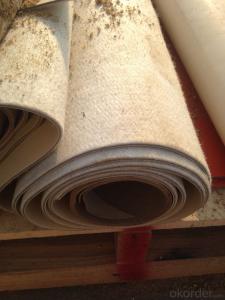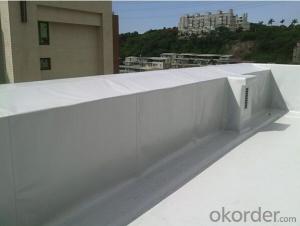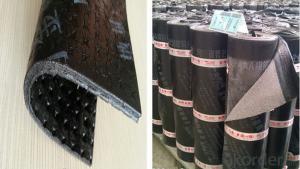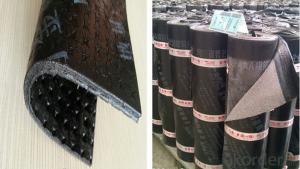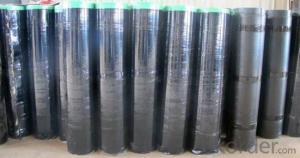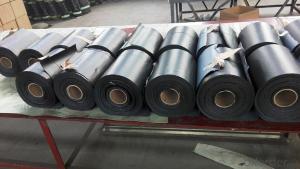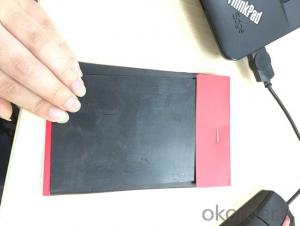SBS Self-adhesive Bituminous Waterproof Roofing Membrane
- Loading Port:
- Shanghai
- Payment Terms:
- TT OR LC
- Min Order Qty:
- 44 roll
- Supply Capability:
- 100000 roll/month
OKorder Service Pledge
OKorder Financial Service
You Might Also Like
Product description
SBS modified bitumen waterproof membranes use high quality needle punched polyester mat or fiberglass compound mat as the base reinforcement. And use SBS modified bitumen as the dip-coat material. The SBS modified bitumen waterproof membrane are widely used for roof waterproof projects.
Specifications
1. Width: 125px-1m or as customized
2. Length: 3m/5m/10m/15m/20m or as customized
3. Thickness: 2mm/3mm/4mm/5mm
4. Surface: PE film, Colorful Sand, Mineral Granules or Aluminium foil
Technical Parameters
No. | Item | Index | |||||
I | II | ||||||
PY | G | PY | G | PYG | |||
1 | Solvend content(g/m²)≥ | 3mm | 2100 | - | |||
4mm | 2900 | - | |||||
5mm | 3500 | ||||||
Experiment phenomena | - | Carrier non-ignitable | - | Carrier non-ignitable | - | ||
2 | Heat risistance | °c | 90 | 105 | |||
≤mm | 2 | ||||||
Experiment phenomena | Non flow,dippage | ||||||
3 | Cold bending/°c | -20 | -25 | ||||
No crack | |||||||
4 | Waterproof 30min | 0.3MPa | 0.2MPa | 0.3MPa | |||
5 | Tensile strength | Maximum peak tensile(N/50mm)≥ | 500 | 350 | 800 | 500 | 900 |
Inferior peak tensile (N/50mm)≥ | - | - | - | - | 800 | ||
Experiment phenomena | In stretching process,the test specimen has no asphalt cracks or separate with the carrier | ||||||
6 | Elongation | Maximum peak elongation | 30 | - | 40 | - | - |
Inferior peak elongation | - | - | 15 | ||||
Product Feature
1. SBS modified bitumen waterproof membrane has good watertightness.
2. SBS modified bitumen waterproof membrane is high strength of extension, good ductility
3. SBS modified bitumen waterproof membrane is special used for low temperature.
4. SBS modified bitumen waterproof membrane is easy construction, can be constructed all of the year by the way of hot melt.
Application
1.Make sure the roof deck is smooth,clean and dry(Moisture<9%),then apply the surface of roof deck with a kind bitumen paint till dry.
2. There are two methods in application:
One way is by heating and melting method---Heat the membrane and roof deck surface by heating and melting method to be nearly melted(not flowing),then install the membrane fully bonded to the roof deck with overlaps of 5-250px.
The other way is by cold adhesive method---Pour the cold adhesive on the roof deck then roll the membrane to install it to be fully sticked to roof deck.
By heating and melting method and by cold adhesive can be used in alternation as requested.
3.After application,, a full serious inspection is required,that’s to make sure no air bubble,,no fold,,no falling away etc. and guarantee the waterproof life.
Requirements for construction
1.The base should be dry and clean. Do not work in the rainy or snowy day.
2.Do not work under heavy wind(above 5 grade)
3.Unsuitable for construction below 5°C
4.If it is rain or snow in the process of construction, protective measure to the laid membrane is must.
5.All the workers should put on special uniforms to keep safe when installing. There should be equipments for fire controls.
product show
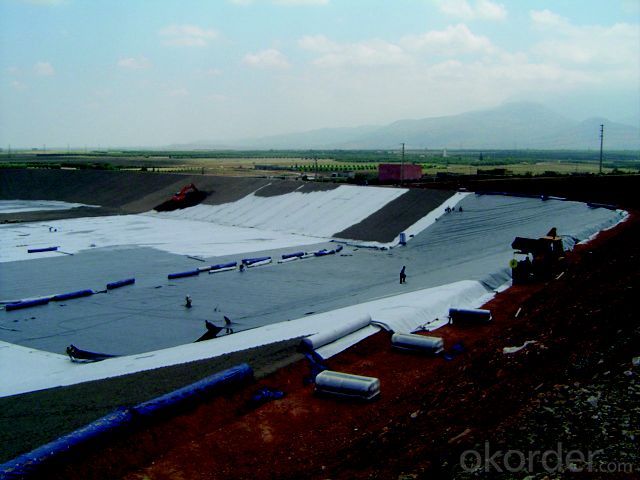
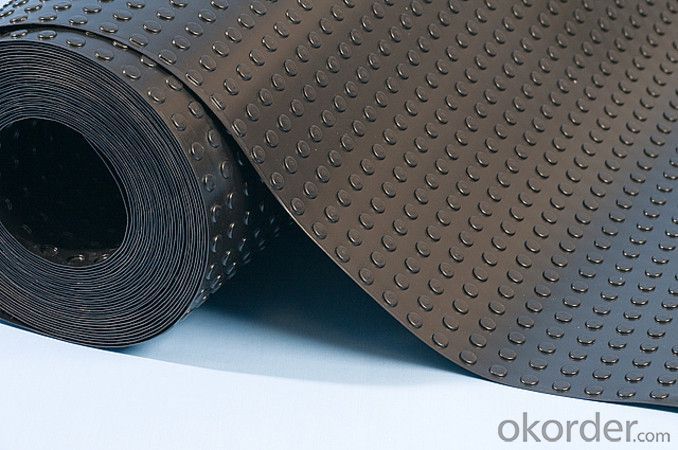
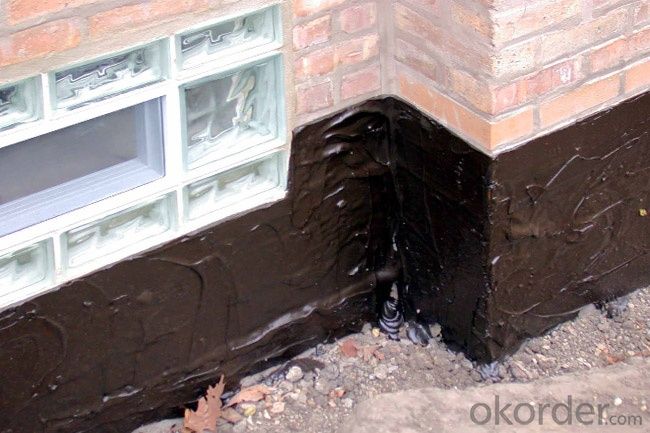
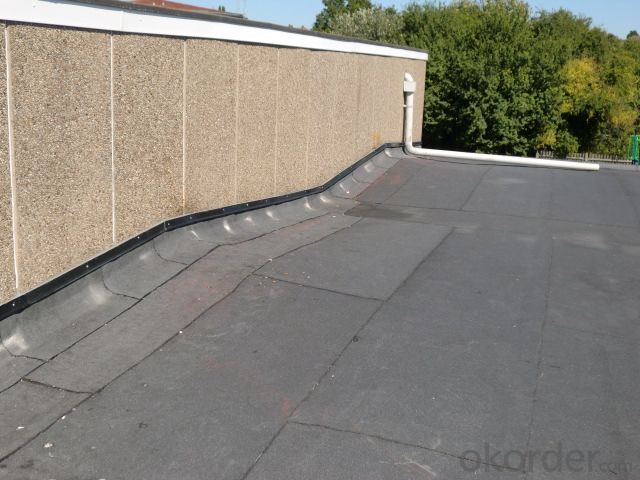
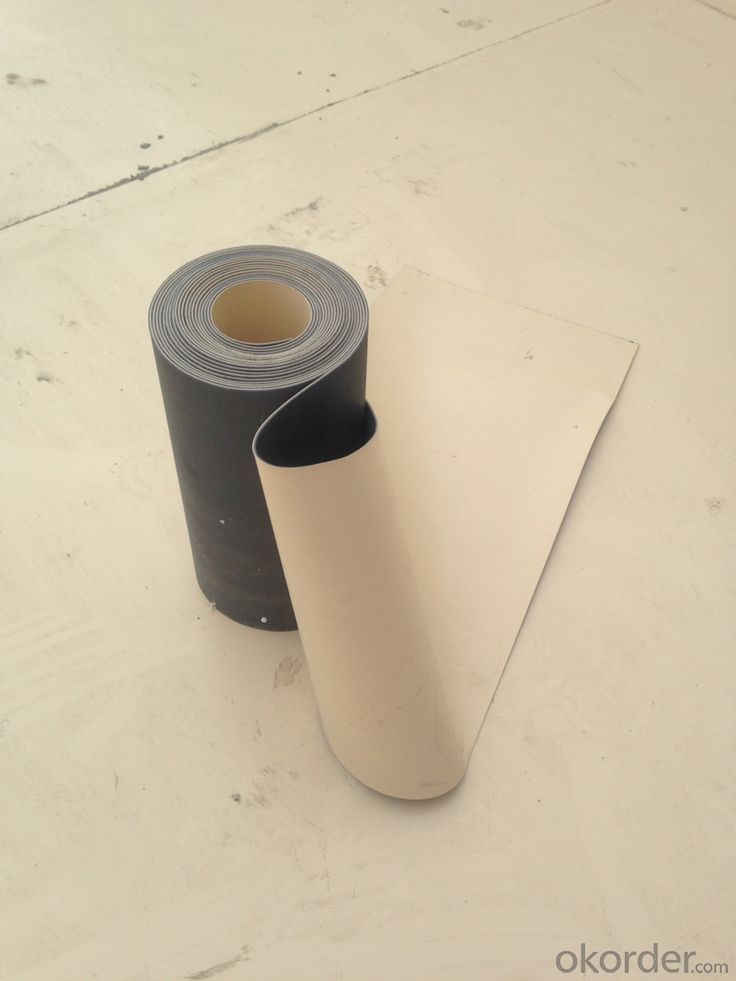
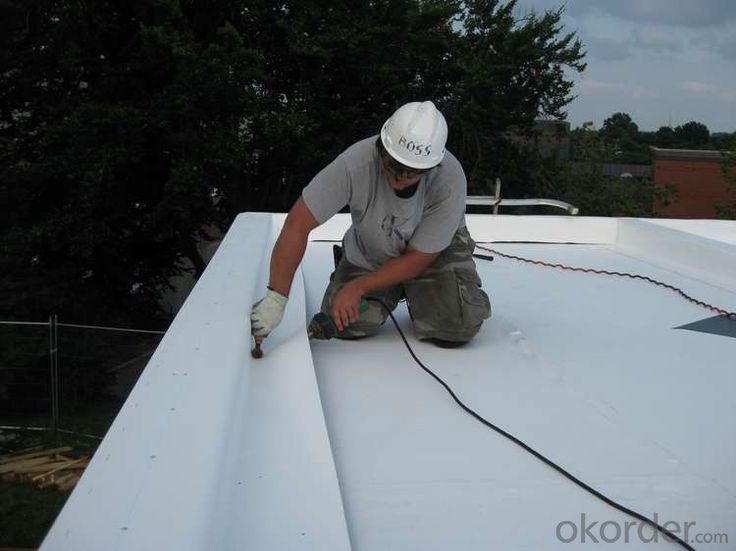
FAQ
Q: What's the delivery time ?
A: 3-5 days for 1-600 rolls, 10-15 days for container.
Q: What's the payment terms ?
A: TT/LC
Q: How do you make replacement with quality problems ?
A: New replacement will be packed into your next order or send to you directly after receive video or photo about quality problems.
- Q: Can a waterproofing membrane be used for a rooftop garden?
- Yes, a waterproofing membrane can be used for a rooftop garden. A waterproofing membrane provides an effective barrier against water penetration, preventing leaks and protecting the underlying structure. This is essential for rooftop gardens as they require proper drainage to ensure plants' health and prevent water damage to the building. Additionally, a waterproofing membrane helps retain moisture within the garden, minimizing water loss.
- Q: Can a waterproofing membrane be used on tunnels with architectural features?
- Indeed, tunnels with architectural features can benefit from the application of a waterproofing membrane. Such membranes possess versatility, enabling their usage on different structures, including tunnels with architectural elements. Their primary purpose is to establish a protective barrier against water infiltration, consequently safeguarding the structure against moisture-related harm. Regardless of the tunnel's unique architectural components, such as curves, arches, or decorative embellishments, a tailored waterproofing membrane can be tailored and implemented to ensure optimal water resistance. Therefore, it is imperative to seek guidance from a proficient waterproofing specialist experienced in working with tunnels and architectural features. They will assist in determining the most suitable membrane system for the specific project prerequisites.
- Q: Can a waterproofing membrane be used for a school?
- Certainly! A school can indeed benefit from the use of a waterproofing membrane. In construction projects, like schools, waterproofing membranes are commonly employed to shield the building and its inhabitants from water damage. These membranes are typically applied to areas like basements, roofs, and foundation walls to prevent water infiltration. By serving as a barrier against moisture, a waterproofing membrane ensures a dry and secure environment within the school, safeguarding against potential structural destruction, mold growth, and other water-related problems. Furthermore, waterproofing membranes often offer supplementary advantages such as insulation and soundproofing, which can contribute to a pleasant and conducive learning atmosphere for students and staff.
- Q: Can a waterproofing membrane be used for interior applications?
- Yes, a waterproofing membrane can be used for interior applications. It is commonly used in bathrooms, kitchens, basements, and other areas where moisture or water damage is a concern. The membrane helps prevent water penetration and protects the underlying structure from potential damage.
- Q: Are waterproofing membranes resistant to battery acid?
- Yes, waterproofing membranes are generally resistant to battery acid.
- Q: Can waterproofing membranes be used on parking decks?
- Yes, waterproofing membranes can be used on parking decks. Parking decks are exposed to various weather conditions and are subject to constant vehicle traffic, which can lead to water penetration and damage. Waterproofing membranes provide a protective barrier against water infiltration, preventing moisture from seeping into the structure and causing deterioration. These membranes are designed to withstand heavy loads and resist the chemicals found in automotive fluids, making them an ideal solution for parking decks. By applying waterproofing membranes, the lifespan of the parking deck can be extended, reducing the need for costly repairs and ensuring the safety and integrity of the structure.
- Q: Can waterproofing membranes be used on concrete floors?
- Yes, waterproofing membranes can be used on concrete floors. Waterproofing membranes are commonly used in construction to prevent water penetration and protect the underlying structure. When applied to concrete floors, these membranes create a barrier that prevents water from seeping through and causing damage. Waterproofing membranes can be particularly useful in areas such as basements, bathrooms, and outdoor patios where water exposure is common. They help to maintain the integrity of the concrete floor and protect it from moisture-related issues like cracking, spalling, and mold growth.
- Q: Can a waterproofing membrane be installed in areas with high humidity?
- Yes, a waterproofing membrane can be installed in areas with high humidity. In fact, high humidity can be a contributing factor to the need for waterproofing as it can lead to moisture buildup and potential water damage. Waterproofing membranes are designed to create a barrier against water penetration, regardless of the humidity levels in the area. However, it is important to ensure that the membrane is properly installed and sealed to prevent any moisture from seeping through. Additionally, it may be necessary to take extra precautions in areas with high humidity, such as using a moisture barrier or dehumidifiers, to further protect against potential water damage.
- Q: Can a waterproofing membrane be used for train platforms?
- Yes, a waterproofing membrane can be used for train platforms. Waterproofing membranes are commonly used in construction to provide a protective barrier against water and moisture. By applying a waterproofing membrane to train platforms, it helps prevent water ingress, which can cause damage to the structure and pose safety risks.
- Q: Are waterproofing membranes resistant to algae growth?
- Yes, waterproofing membranes are typically resistant to algae growth. The materials used in these membranes are often designed to be non-porous and inhibit the growth of algae and other organic matter. Additionally, some membranes may have additional features such as UV resistance or anti-microbial properties that further deter algae growth.
Send your message to us
SBS Self-adhesive Bituminous Waterproof Roofing Membrane
- Loading Port:
- Shanghai
- Payment Terms:
- TT OR LC
- Min Order Qty:
- 44 roll
- Supply Capability:
- 100000 roll/month
OKorder Service Pledge
OKorder Financial Service
Similar products
Hot products
Hot Searches
Related keywords
